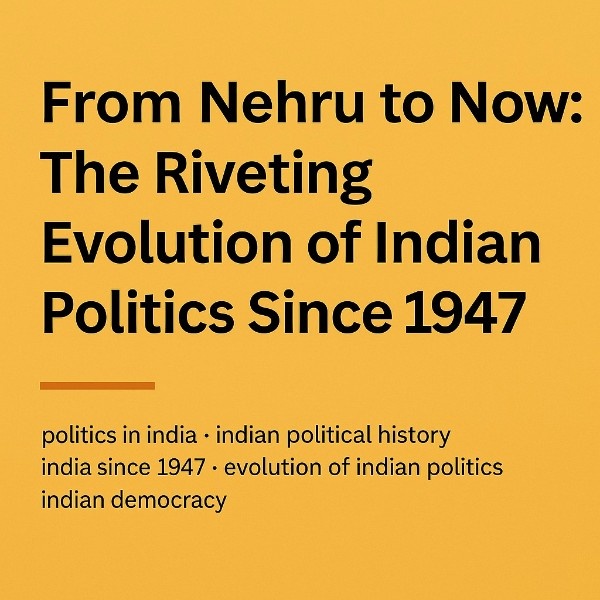Explore the journey of Indian politics from 1947 till now, covering leaders, elections, reforms, and the evolution of the world’s largest democracy.
India’s political landscape has been a dynamic canvas since gaining independence in 1947, evolving through transformative leadership, landmark policies, and the constant dance between democracy and diversity. Understanding this journey helps decode how India, the world’s largest democracy, has shaped its identity while balancing tradition and modern aspirations.

The Early Years: Nehruvian Vision
Post-independence, under the leadership of Jawaharlal Nehru, India embraced a parliamentary democracy with socialist leanings, focusing on planned economic development, industrialisation, and non-alignment in foreign policy. The Congress party dominated these years, crafting policies that laid the foundation for a self-reliant India.
Political Shifts and the Emergency Era
By the 1970s, under Indira Gandhi, Indian politics witnessed centralisation of power and the declaration of the Emergency (1975-77), which suspended civil liberties and led to widespread political upheaval. This period reshaped citizen awareness and ignited the spirit of democratic resistance, culminating in the rise of the Janata Party in 1977.
The Coalition Era and Economic Liberalisation
The 1980s and 1990s marked significant political shifts with the assassination of Indira Gandhi, Rajiv Gandhi’s leadership, and the rise of coalition politics. In 1991, under P.V. Narasimha Rao and Manmohan Singh, India initiated economic liberalisation, opening the markets and leading to rapid growth and global integration, fundamentally altering India’s economic trajectory.
Rise of Regional Parties
The decline of Congress dominance gave space to regional parties like DMK, TDP, and Shiv Sena, reflecting India’s linguistic and cultural diversity in politics. This era saw coalition governments and regional leaders playing crucial roles in national decision-making, enriching India’s democratic fabric.
The BJP Era and Contemporary Politics
The Bharatiya Janata Party (BJP) emerged as a formidable force with leaders like Atal Bihari Vajpayee and later Narendra Modi, who came to power in 2014 with a strong mandate, focusing on governance, digital initiatives, and infrastructural growth. Issues like nationalism, economic reforms, and debates on secularism vs. cultural identity have become central to contemporary Indian politics.
Challenges and the Road Ahead
Indian politics today faces challenges including economic disparity, social harmony, climate change, and balancing rapid urbanisation with sustainability. As India advances towards becoming a major global player, its politics continue to reflect the vibrancy and contradictions of its diverse population.
Why This Journey Matters
Politics in India from 1947 till now is not just about elections and leaders; it is about the aspirations of over a billion people navigating democracy while staying rooted in a complex cultural heritage. From fighting poverty to embracing technology, the evolution of Indian politics remains a fascinating saga of resilience, transformation, and hope.
